 "ttyymmnn" (ttyymmnn)
"ttyymmnn" (ttyymmnn)
08/02/2016 at 12:35 • Filed to: planelopnik, planelopnik history
 7
7
 11
11
 "ttyymmnn" (ttyymmnn)
"ttyymmnn" (ttyymmnn)
08/02/2016 at 12:35 • Filed to: planelopnik, planelopnik history |  7 7
|  11 11 |
Welcome to This Date in Aviation History , getting of you caught up on milestones, important historical events and people in aviation from July 30 - August 2.
!!! UNKNOWN CONTENT TYPE !!!
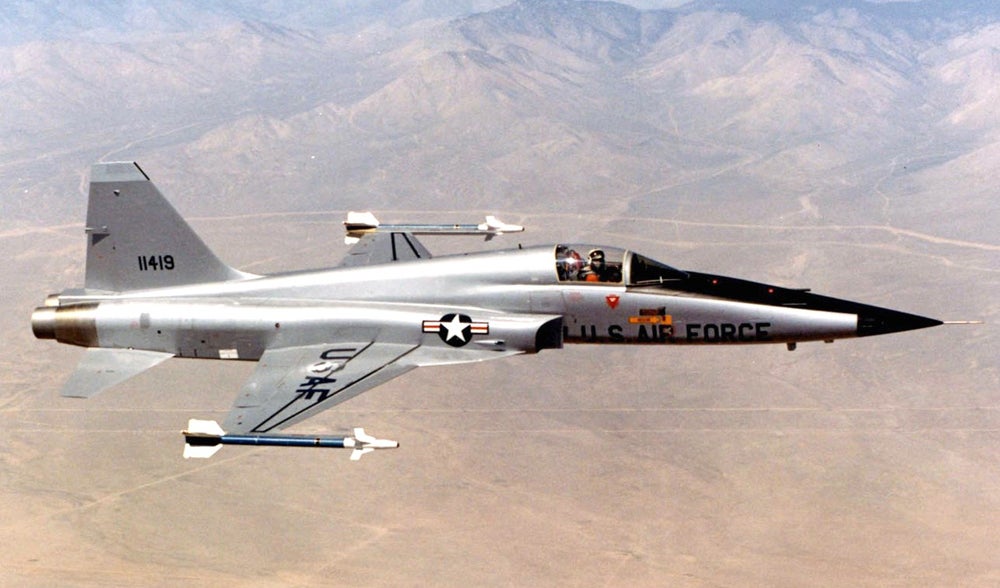
July 30, 1959 – The first flight of the Northrop F-5A Freedom Fighter. When the first jet fighters took flight at the end of WWII, they were relatively simple affairs, essentially straight-winged piston aircraft that were adapted for the new power plant. But as jet engines became more powerful, fighters got bigger, more complex—and more expensive. To combat this trend, Northrop began working on a small, simple fighter in the mid-1950s, called the N-156, in the hopes of securing a contract to produce a fighter that could fly from the US Navy’s smaller !!!error: Indecipherable SUB-paragraph formatting!!! . The design team was led by Northrop’s vice president of engineering !!!error: Indecipherable SUB-paragraph formatting!!! , who designed two of arguably the greatest fighters ever built, the !!!error: Indecipherable SUB-paragraph formatting!!! and !!!error: Indecipherable SUB-paragraph formatting!!! before coming to Northrop. Along with chief engineer Welko Gasich, the Northrop team set out with the specific goals of creating a small, low-cost fighter that would be easy to maintain and easy to fly, but would also have the potential for future growth and development. Northrop chose to build their new fighter around two powerful !!!error: Indecipherable SUB-paragraph formatting!!! turbojet engines which were originally designed to power the !!!error: Indecipherable SUB-paragraph formatting!!! target decoy. Combined with its small size and use of the !!!error: Indecipherable SUB-paragraph formatting!!! , which gave the F-5 its characteristic slim waist, the fighter was capable of a top speed of Mach 1.6 and a thrust-to-weight ratio of up to 7.5:1.
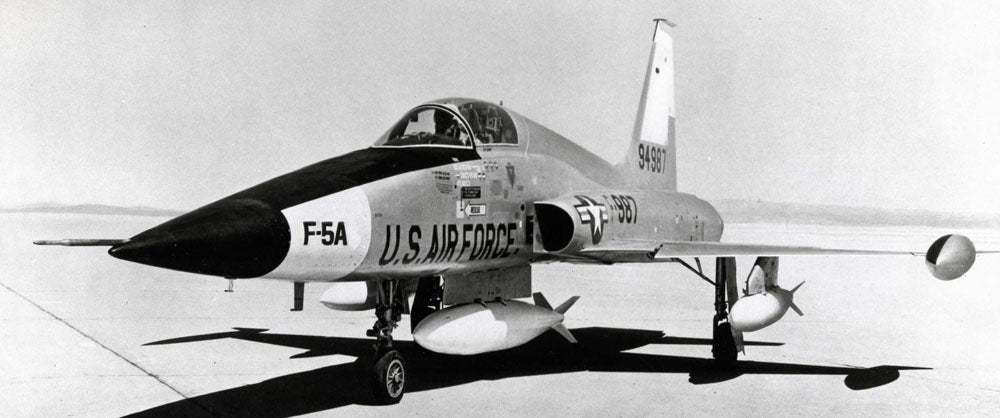
Northrop YF-5A prototype
When the Navy decided to retire their remaining escort carriers, Northrop forged ahead with their design, developing both a single-seat fighter version, the N-156F, and a two-seat trainer version, the N-156T. In July 1956, the Air Force chose the two-seat trainer to replace the !!!error: Indecipherable SUB-paragraph formatting!!! as its primary trainer, and the newly designated !!!error: Indecipherable SUB-paragraph formatting!!! became the world’s first supersonic trainer, and also the one produced in the highest numbers. Northrop continued developing the N-156F in the hopes of providing a fighter for the !!!error: Indecipherable SUB-paragraph formatting!!! , which sought to arm nations allied to the US with low-cost weapons, and it was this aircraft which took its first flight on July 30, breaking the sound barrier on its maiden flight. When the US Air Force showed little interest in the F-5, it was ultimately chosen by the Kennedy Administration as the winner of the F-X competition in 1962 to provide a low-cost export fighter. In 1965, the Air Force sent 12 F-5As to Vietnam to evaluate them under the codename Project Skoshi Tiger, and it was here that the F-5 received its unofficial nickname, which became official with the later F-5E/F Tiger II. While the F-5 wasn’t adopted in large numbers by the US, it continues to fly them in the aggressor role for dissimilar combat training, and the Air Force has also bought back some export fighters for this role. The Tiger II, which won the International Fighter Aircraft competition in 1970, remains in service alongside older Freedom Fighters the world over. Northrop attempted yet another upgrade to the venerable little fighter with the !!!error: Indecipherable SUB-paragraph formatting!!! , hoping to develop an export fighter to compete with the !!!error: Indecipherable SUB-paragraph formatting!!! , but it was ultimately unsuccessful. By the end of production in 1987, a total of 847 F-5A/B/C aircraft had been built, along with a total of almost 1,400 F-5E/Fs. (US Air Force photos)
!!! UNKNOWN CONTENT TYPE !!!
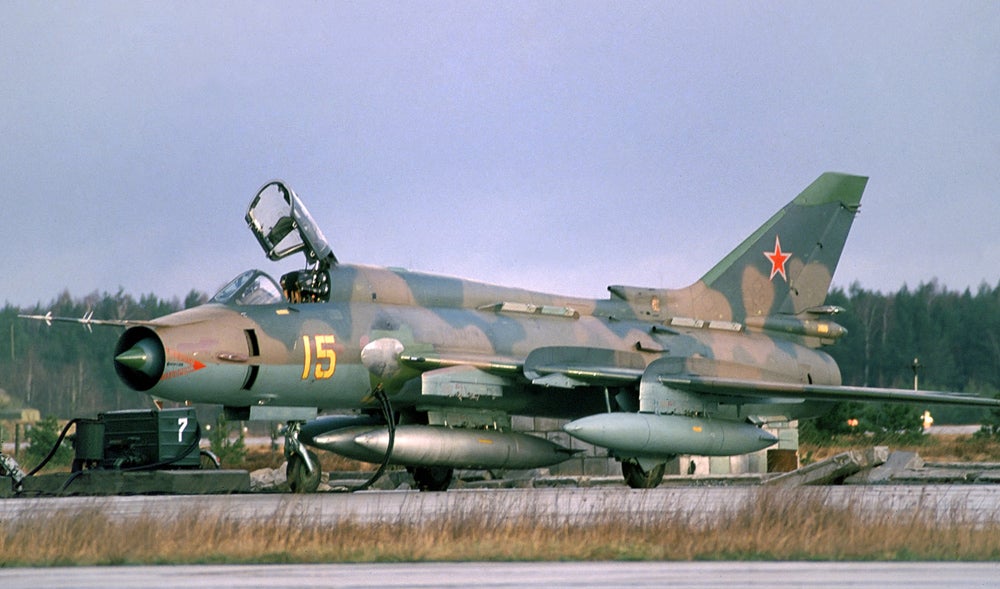
August 2, 1966 – The first flight of the Sukhoi Su-17. Before the adoption of the jet engine in aviation, almost all aircraft, dating back to the Wright Flyer, were built with straight wings. Straight wings are good for low-speed stability, but as speeds increased with the advent of jet engines, designers in Germany began to experiment with swept wings that would be more advantageous to the higher speeds capable with turbojet engines. But as early as 1944, the idea of having an airplane with a !!!error: Indecipherable SUB-paragraph formatting!!! (also called variable-geometry) that could alter its wing sweep was being investigated in Germany !!!error: Indecipherable SUB-paragraph formatting!!! . But this aircraft, which never entered production, could only vary the sweep of the wings to a fixed position before takeoff. In England, !!!error: Indecipherable SUB-paragraph formatting!!! began working on a swing-wing concept in 1949, but it wasn’t until the experimental !!!error: Indecipherable SUB-paragraph formatting!!! , which first flew in 1951 and had three different wing positions, could an aircraft vary its geometry in flight. However, one of the problems faced by a variable geometry aircraft is an unfavorable shift in the center of gravity between the straight and swept positions. To counter this problem, Russian designers at the !!!error: Indecipherable SUB-paragraph formatting!!! (TsAGI) modified an existing aircraft, !!!error: Indecipherable SUB-paragraph formatting!!! , to use a fixed central wing with a variable outer wing in the hopes of improving the Su-7's low-speed flight characteristics and lowering its landing speed.
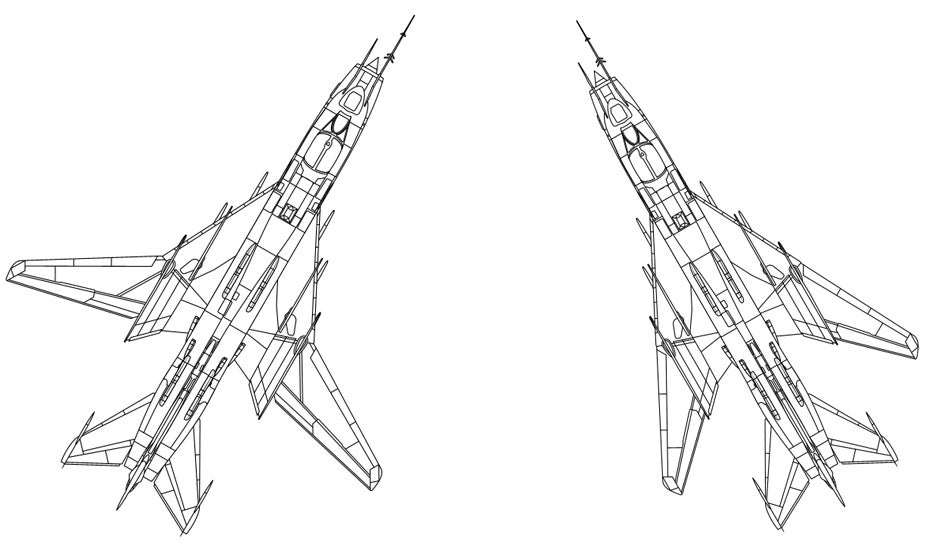
This new aircraft, dubbed the Su-7IG, would be further developed into the Su-17 and become Russia’s first variable geometry aircraft, and the first in a series of fighters that also included the Su-20 and the Su-22, all of which were given the NATO reporting name
Fitter
. Among other changes from the Su-7 was a new canopy and a dorsal spine for additional fuel and avionics. The Su-17 was powered by a single
!!!error: Indecipherable SUB-paragraph formatting!!!
afterburning axial flow turbojet that gave the
Fitter
a top speed of 870 mph, and it was armed with two 30mm cannons and could carry up to 8,800 pounds of external stores under the fixed wing section or on the fuselage. The Su-17 entered service with the Soviet Air Force in 1970, where it served during the Soviet
!!!error: Indecipherable SUB-paragraph formatting!!!
from 1979-1989. While high elevation and high temperature operations proved challenging for the Su-17, the ruggedly constructed engine was tolerant to sand ingestion and the
Fitter
maintained a high level of readiness. However, the Su-17 proved susceptible to anti-aircraft fire and shoulder-fired antiaircraft missiles. The
Fitter
was widely exported to Soviet allies, eventually serving for over 20 years with Russia and 15 export countries, including Libya, where two Su-17s were
!!!error: Indecipherable SUB-paragraph formatting!!!
by US Navy
!!!error: Indecipherable SUB-paragraph formatting!!!
fighters over the Gulf of Sidra in 1981. Despite advances in Soviet fighter design, the Su-17 and its derivatives remained in service with Russia until 1998, and more than 500 of the 2,867 aircraft produced remain in service today.
(Photo by Rob Schleiffert via
!!!error: Indecipherable SUB-paragraph formatting!!!
; schematic by Emoscopes via
!!!error: Indecipherable SUB-paragraph formatting!!!
)
!!! UNKNOWN CONTENT TYPE !!!
Short Take Off
!!! UNKNOWN CONTENT TYPE !!!
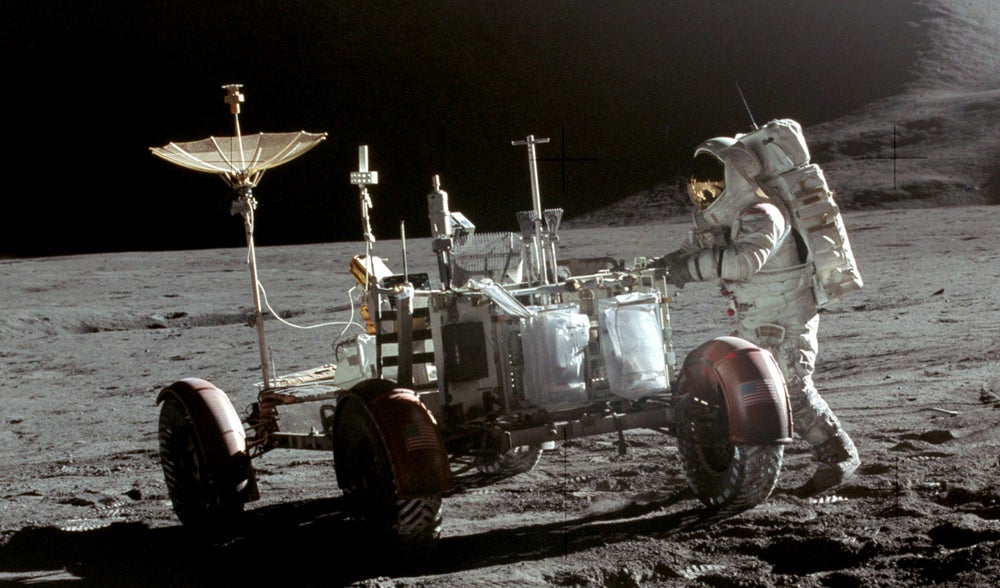
July 30, 1971 – The Apollo 15 mission deploys the first Lunar Rover on the Moon. !!!error: Indecipherable SUB-paragraph formatting!!! was the 9th manned mission launched by NASA as part of the !!!error: Indecipherable SUB-paragraph formatting!!! , and the 4th to land on the Moon. It was also the first of the so-called !!!error: Indecipherable SUB-paragraph formatting!!! , which featured extended stays of more than three days on the Lunar surface, with greater emphasis on scientific exploration. In order to cover more ground than was possible on foot, Apollo 15 deployed the first !!!error: Indecipherable SUB-paragraph formatting!!! (LRV), a battery-powered rover that could carry two astronauts at speeds of 6 to 8 mph, and astronauts !!!error: Indecipherable SUB-paragraph formatting!!! and !!!error: Indecipherable SUB-paragraph formatting!!! covered a total distance of 17.25 miles in the Rover. The Rover, along with ones placed by !!!error: Indecipherable SUB-paragraph formatting!!! and !!!error: Indecipherable SUB-paragraph formatting!!! , remained on the Moon. (NASA photo)
!!! UNKNOWN CONTENT TYPE !!!
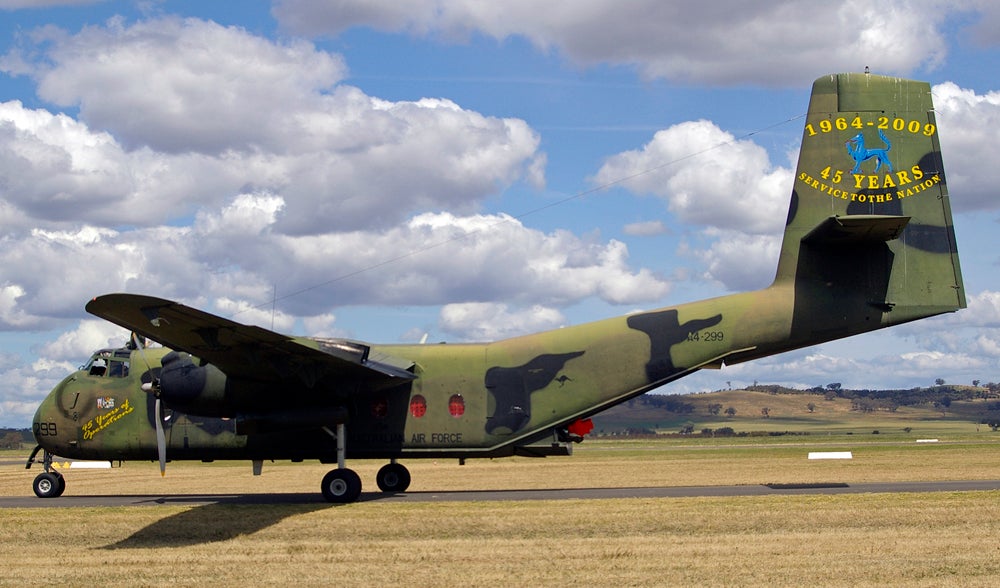
July 30, 1958 – The first flight of the de Havilland Canada DHC-4 Caribou, a cargo aircraft designed for !!!error: Indecipherable SUB-paragraph formatting!!! (STOL) to fulfill a requirement from the US Army for a tactical airlifter to supply frontline troops. Following the !!!error: Indecipherable SUB-paragraph formatting!!! and !!!error: Indecipherable SUB-paragraph formatting!!! , the Caribou was the first aircraft designed by !!!error: Indecipherable SUB-paragraph formatting!!! to have two engines, and it entered US Army service in 1961 where it was known as the C-7. Initially seeing service in Vietnam, the Caribou’s ability to operate from runways as short as 1,200 feet made it an ideal complement to the Air Force’s larger cargo airplanes. A total of 307 were produced, and the final Caribous were retired from military service by the Royal Australian Air Force in 2009. (Photo by Bidgee via !!!error: Indecipherable SUB-paragraph formatting!!! )
!!! UNKNOWN CONTENT TYPE !!!
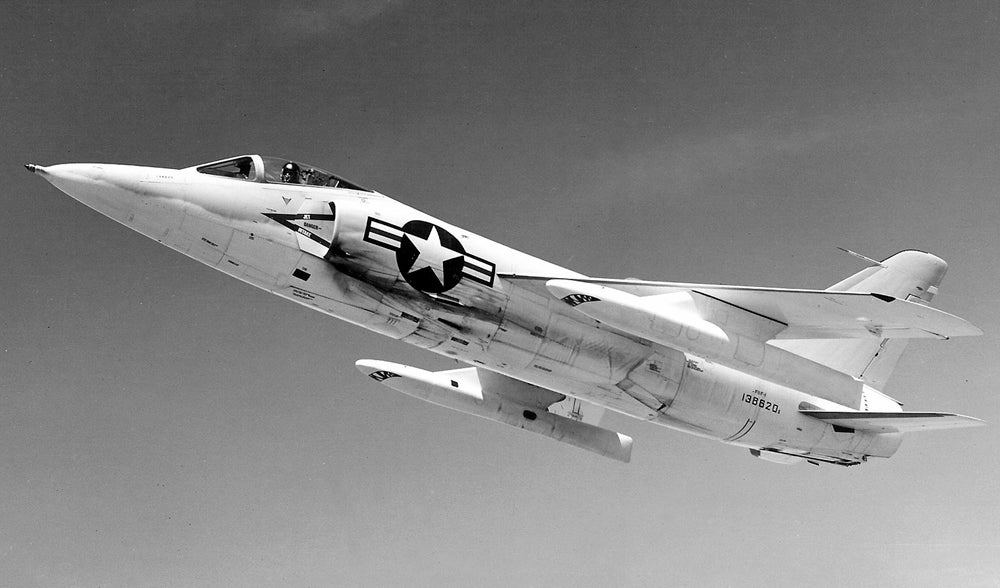
July 30, 1954 – The first flight of the Grumman F-11 Tiger, a day fighter developed for the US Navy by Grumman that began as an advanced development of the !!!error: Indecipherable SUB-paragraph formatting!!! . Grumman eliminated the wing root air intakes and moved them forward to help reduce drag, made the wing thinner, moved the elevator down to the fuselage, and reshaped the fuselage to take advantage of the newly discovered !!!error: Indecipherable SUB-paragraph formatting!!! principle. The Tiger remained a work in progress throughout its career, and also earned the dubious distinction of becoming the first jet to shoot itself down when it overtook its own bullets in a dive during weapons testing. The Tiger’s operational career was relatively short, though it gained prominence when the fighter was selected by the Navy’s !!!error: Indecipherable SUB-paragraph formatting!!! in 1957. A total of 200 Tigers were produced from 1954-1959, and it was retired from active service in 1961, though it served the Blue Angels until 1969. (US Navy photo)
!!! UNKNOWN CONTENT TYPE !!!
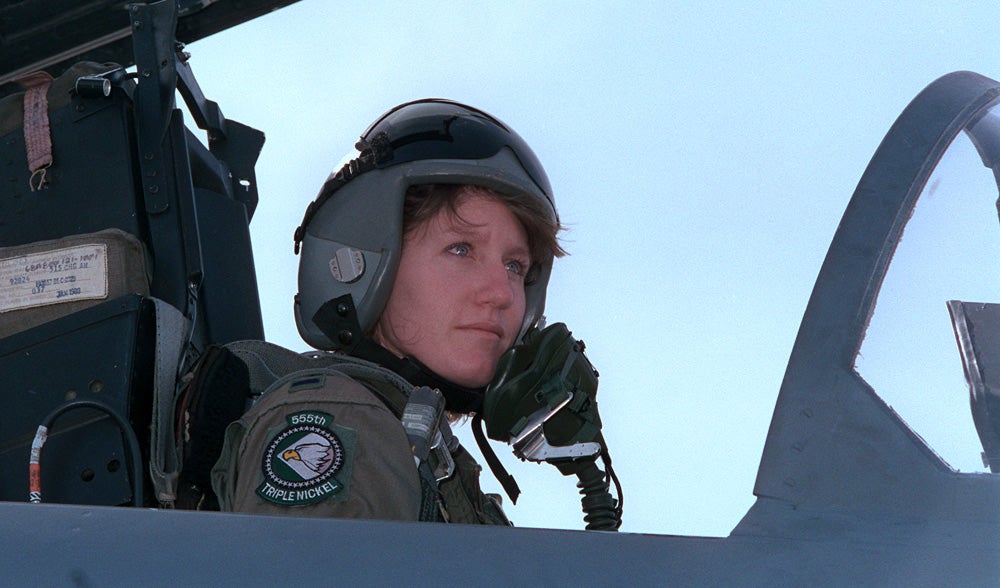
July 31, 1991 – The US Senate votes to allow women to fly combat aircraft. Women were first allowed to fly US military aircraft in WWII as members of the !!!error: Indecipherable SUB-paragraph formatting!!! (WASP), but they were limited to ferrying flights and were considered civilian pilots, receiving no military benefits. The first women military pilots received their wings in 1974 with the US Navy, and then in 1976 with the US Air Force, but they were still excluded from combat missions, even though they were flying cargo and liaison aircraft into war zones such as Panama, Grenada, and the Persian Gulf. Following the !!!error: Indecipherable SUB-paragraph formatting!!! , !!!error: Indecipherable SUB-paragraph formatting!!! became the first American woman to fly a combat mission when she piloted a !!!error: Indecipherable SUB-paragraph formatting!!! in support of !!!error: Indecipherable SUB-paragraph formatting!!! over Iraq in 1995. (US Air Force photo)
!!! UNKNOWN CONTENT TYPE !!!
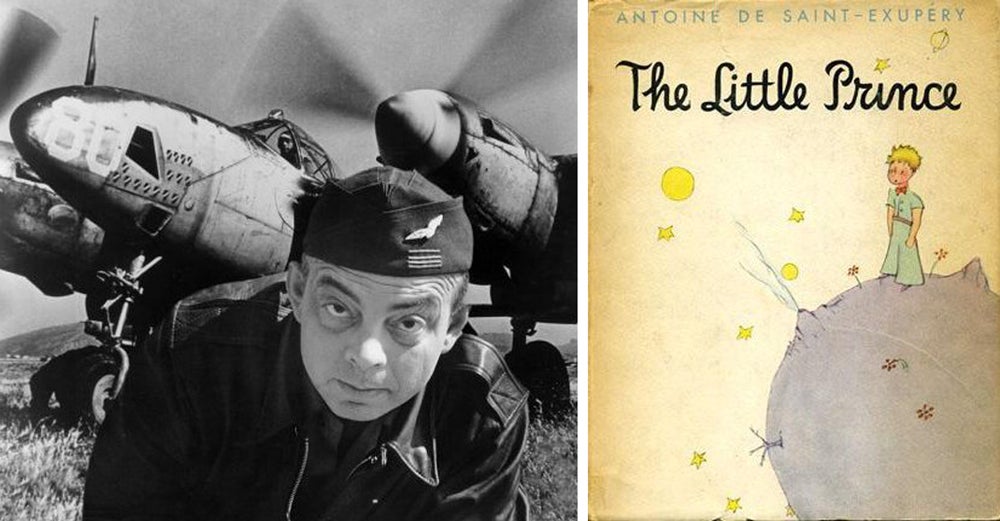
July 31, 1944 – The disappearance of Antoine de Saint-Exupéry. Born on June 29, 1900, !!!error: Indecipherable SUB-paragraph formatting!!! was a French author and pilot who is best known for his boo !!!error: Indecipherable SUB-paragraph formatting!!! ( The Little Princ e). Exupéry flew for the French Air Force in the early part WWII and, following the fall of France, he traveled to America to encourage the US to join the war before joining the !!!error: Indecipherable SUB-paragraph formatting!!! in North Africa, even though his health was failing and he was beyond the age limit for service. Saint-Exupéry disappeared over the Mediterranean Sea while flying a Lockheed F-5B, the unarmed reconnaissance variant of the !!!error: Indecipherable SUB-paragraph formatting!!! , and while remains of a pilot were found, they were not confirmed to be his. (Exupéry photo author unknown)
!!! UNKNOWN CONTENT TYPE !!!
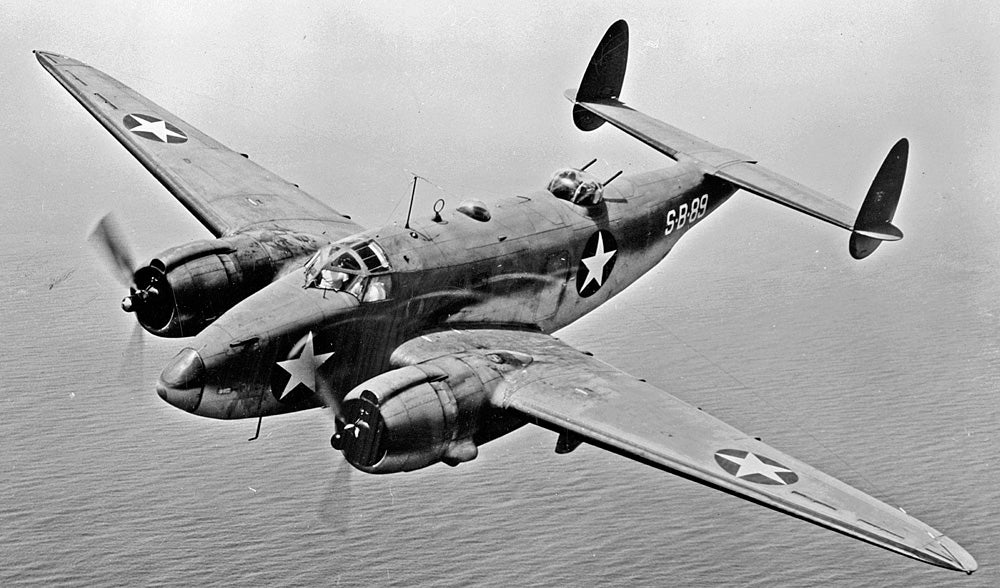
July 31, 1941 – The first flight of the Lockheed Ventura, a medium bomber and maritime patrol aircraft developed from the !!!error: Indecipherable SUB-paragraph formatting!!! and designed to replace the !!!error: Indecipherable SUB-paragraph formatting!!! . The Ventura was initially flown by the RAF as a medium bomber, but it suffered high combat losses and was pulled from service in favor of the !!!error: Indecipherable SUB-paragraph formatting!!! . Remaining Venturas were moved to maritime patrol missions. In US Army Air Corps service, it was known as the B-34 Lexington and was used primarily for training, though Army Venturas were subsequently transferred to the US Navy where they gained the designation PV-1, serving primarily in the !!!error: Indecipherable SUB-paragraph formatting!!! of Alaska. (US Library of Congress photo)
!!! UNKNOWN CONTENT TYPE !!!
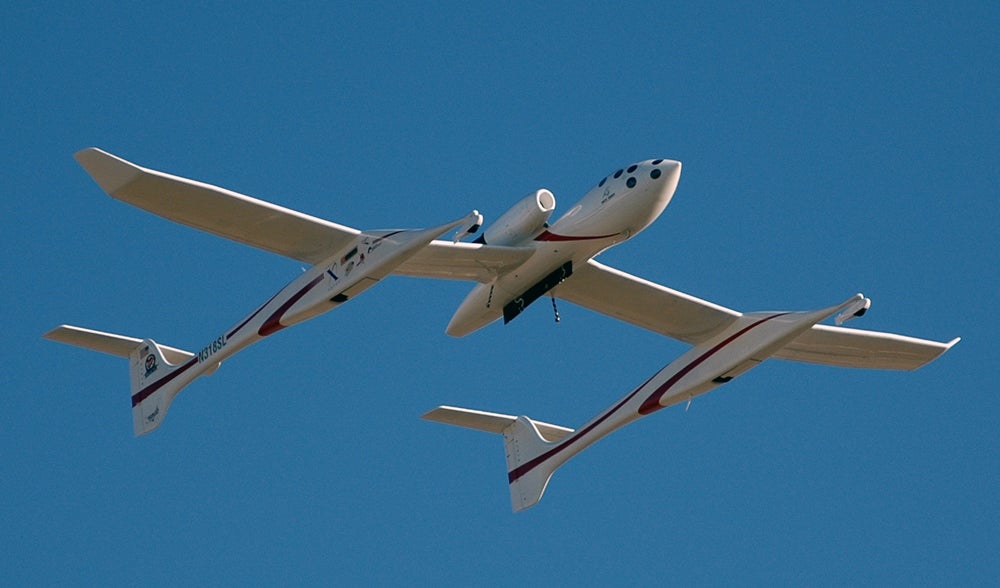
August 1, 2002 – The first flight of the Scaled Composites White Knight, an aircraft designed to launch the !!!error: Indecipherable SUB-paragraph formatting!!! experimental spacecraft in the first part of a program to take paying passengers into space. Designed by !!!error: Indecipherable SUB-paragraph formatting!!! , White Knight is powered by two !!!error: Indecipherable SUB-paragraph formatting!!! turbojet engines and carried the SpaceShipOne to an altitude of 45,000 feet before releasing it to fly to space on its rocket motor. A total of 17 flights were made with SpaceShipOne before it was replaced by the larger and more powerful !!!error: Indecipherable SUB-paragraph formatting!!! . Following the completion of the SpaceShipOne program, White Knight carried out drop tests of the !!!error: Indecipherable SUB-paragraph formatting!!! Orbital Test Vehicle. In July 2014, White Knight was retired to the !!!error: Indecipherable SUB-paragraph formatting!!! in Everett, Washington. (Photo by D Ramey Logan via !!!error: Indecipherable SUB-paragraph formatting!!! )
!!! UNKNOWN CONTENT TYPE !!!

August 1, 1973 – The first flight of the Martin Marietta X-24B, an experimental wingless aircraft developed jointly between the US Air Force and NASA to explore the concepts of !!!error: Indecipherable SUB-paragraph formatting!!! aircraft. The X-24 was dropped from a !!!error: Indecipherable SUB-paragraph formatting!!! , then powered by a rocket engine in flight before gliding to a landing. The lifting body research was carried out from 1963 to 1975 to investigate wingless vehicles that could land on Earth after flying in space, and data gained during these experiments was put to use in the design of the !!!error: Indecipherable SUB-paragraph formatting!!! . The X-24B made a total of 36 test flights before it was retired to the National Museum of the United States Air Force in Dayton, Ohio. (NASA photo)
!!! UNKNOWN CONTENT TYPE !!!
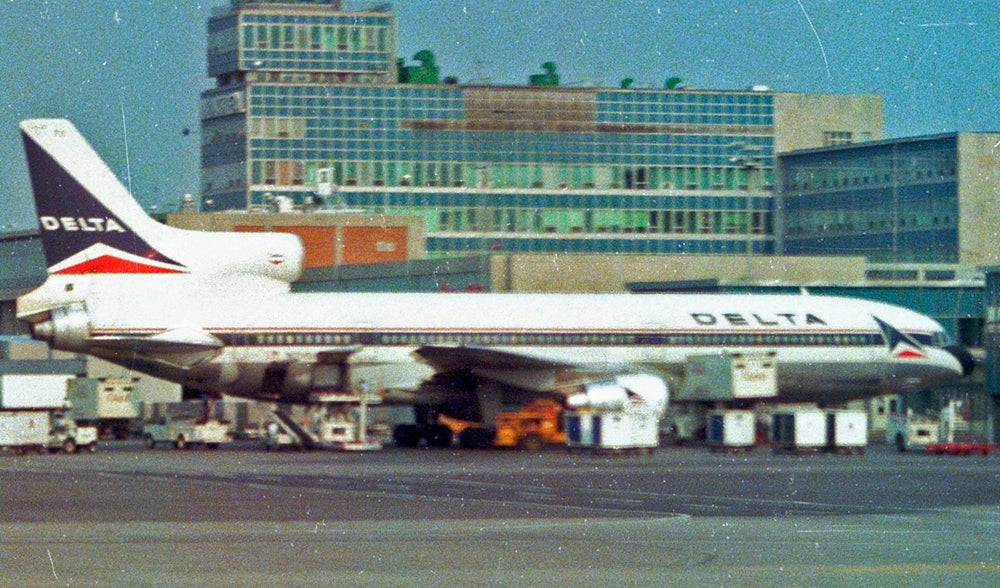
August 2, 1985 – The crash of Delta Air Lines Flight 191, a regularly scheduled flight of a !!!error: Indecipherable SUB-paragraph formatting!!! (N726DA) from Fort Lauderdale to Dallas that crashed while trying to land in a thunderstorm. Lacking sophisticated !!!error: Indecipherable SUB-paragraph formatting!!! found on today’s airliners that could warn the pilots of wind speeds in a storm, the airliner was struck by !!!error: Indecipherable SUB-paragraph formatting!!! -induced !!!error: Indecipherable SUB-paragraph formatting!!! at low altitude that caused the L-1011 to crash a mile short of the runway, killing 136 passengers and crew, plus 1 person on the ground. The National Transportation Board !!!error: Indecipherable SUB-paragraph formatting!!! faulted the pilots for choosing to land through the storm, as well as a lack of training for dealing with wind shear. As a result of this crash, the Federal Aviation Administration now mandates wind shear detection systems on all commercial aircraft. (Photo by Andrew Thomas via !!!error: Indecipherable SUB-paragraph formatting!!! )
!!! UNKNOWN CONTENT TYPE !!!
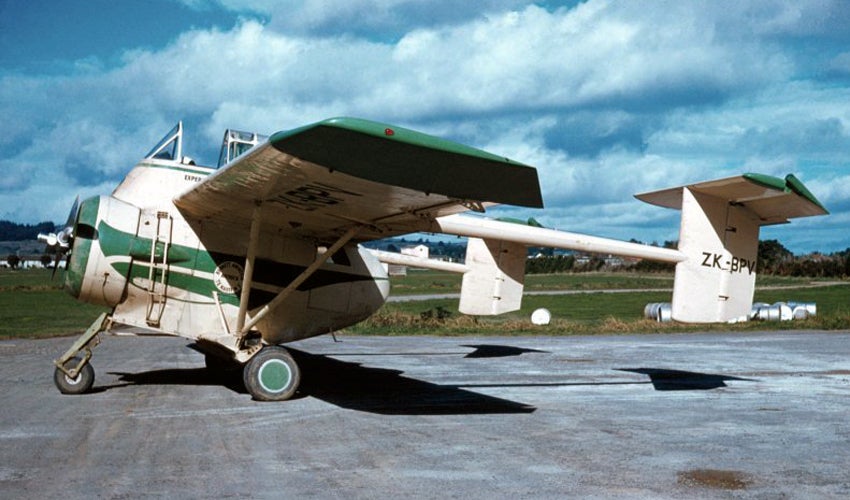
August 2, 1960 – The first flight of the Bennett Airtruck, an agricultural aircraft constructed from surplus Royal New Zealand Air Force !!!error: Indecipherable SUB-paragraph formatting!!! (T-6) training aircraft. The Airtruck is essentially an agricultural chemical hopper with wings, engine and twin-boom tail, with the cockpit placed directly over the engine. Up to 5 passengers could also be carried instead of chemicals. Two were built, and the first crashed in 1963, and the second crashed 2 years later. Despite the loss of the prototypes, the Airtruck proved to be a very efficient agricultural !!!error: Indecipherable SUB-paragraph formatting!!! , and the design was transferred to the Transavia Corporation, who produced the !!!error: Indecipherable SUB-paragraph formatting!!! , which was manufactured from scratch and did not use scavenged Harvard parts. (Photo by Flyernzl)
!!! UNKNOWN CONTENT TYPE !!!
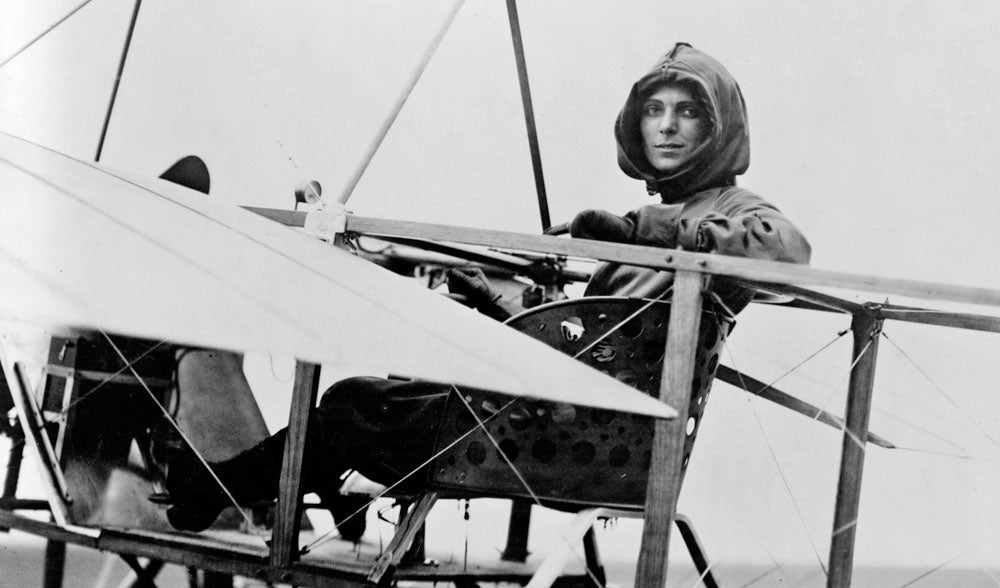
August 2, 1911 – Harriet Quimby becomes the first American woman to be certified as a pilot. At a time when flying was dominated by male pilots, Quimby became the first woman to earn a pilot’s license in the United States, and her piloting exploits served as an inspiration to many women of her day. Quimby was hired as a spokesperson by the Vin Fiz Company and became the first woman to fly across the English Channel in 1912, a feat that was unfortunately overshadowed by news of the sinking of the !!!error: Indecipherable SUB-paragraph formatting!!! just one day later. Quimby was killed on July 1, 1912 when, for unknown reasons, her !!!error: Indecipherable SUB-paragraph formatting!!! monoplane suddenly pitched forward, ejecting both her and her passenger at an altitude of 1,500 feet. Ironically, the plane came to earth relatively undamaged. (Library of Congress photo)
!!! UNKNOWN CONTENT TYPE !!!
Recent Aviation History Posts
!!! UNKNOWN CONTENT TYPE !!!
!!! UNKNOWN CONTENT TYPE !!!
!!! UNKNOWN CONTENT TYPE !!!
!!! UNKNOWN CONTENT TYPE !!!
If you enjoy these Aviation History posts, please let me know in the comments. And if you missed any of the past articles, you can find them all at
!!!error: Indecipherable SUB-paragraph formatting!!!
.
!!! UNKNOWN CONTENT TYPE !!!
 MonkeePuzzle
> ttyymmnn
MonkeePuzzle
> ttyymmnn
08/02/2016 at 12:43 |
|
such a good book, I’m looking forward to the movie (which appears to have little relation to the book, but who cares?)
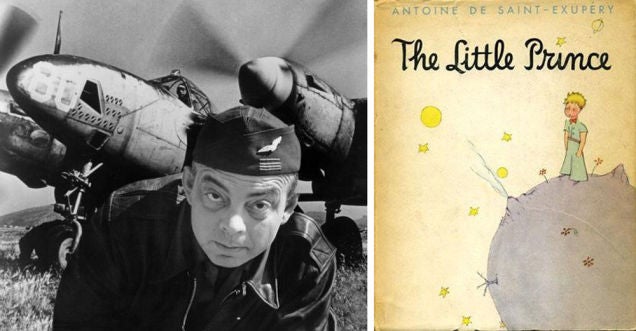
 MonkeePuzzle
> ttyymmnn
MonkeePuzzle
> ttyymmnn
08/02/2016 at 12:45 |
|
lol! how hard the conference room full of engineers and designers and businessmen must have laughed!

that it is made from surplus T-6 is simply astounding!
 ttyymmnn
> MonkeePuzzle
ttyymmnn
> MonkeePuzzle
08/02/2016 at 13:05 |
|
Sad to say, I’ve never read the book. And I had no idea that they were making a movie of it. I’ll be sure to read the book first.
 MonkeePuzzle
> ttyymmnn
MonkeePuzzle
> ttyymmnn
08/02/2016 at 13:09 |
|
I’ve found the book in PDF online in a number of places.
and the movie preview if you wanna review.
 ttyymmnn
> MonkeePuzzle
ttyymmnn
> MonkeePuzzle
08/02/2016 at 13:33 |
|
I’m an old fart, so I’ll go buy a hardcopy of it. Besides, it’s one of those books that I should own. Thanks.
 Distraxi's idea of perfection is a Jagroen
> ttyymmnn
Distraxi's idea of perfection is a Jagroen
> ttyymmnn
08/02/2016 at 13:47 |
|
They have an Airtruk at my local museum. Astonishing it’ll take 5 passengers - it’s tiny.
 RallyWrench
> ttyymmnn
RallyWrench
> ttyymmnn
08/02/2016 at 14:43 |
|
Interesting that a MiG would wear USAF markings...
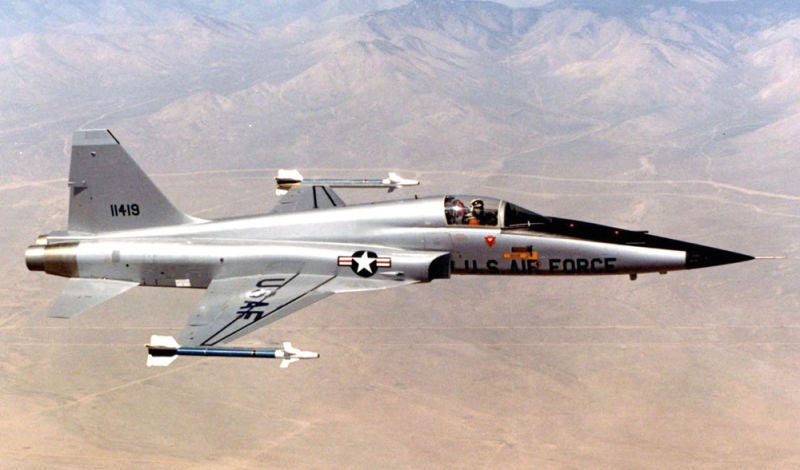
Interesting as always, thanks! Also, that Airtruck... yeesh. Also also, the similarity between the Su-17 and the MiG 21 can’t be ignored, but the 21 is something like 10 years older.
 ttyymmnn
> RallyWrench
ttyymmnn
> RallyWrench
08/02/2016 at 15:09 |
|
Actually....

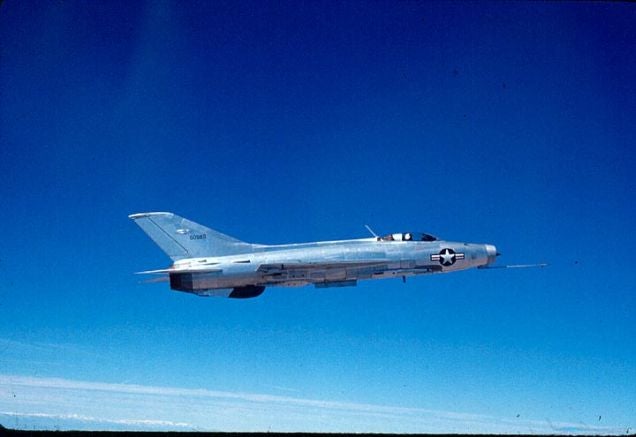
http://oppositelock.kinja.com/yf-110-1459413…
 RallyWrench
> ttyymmnn
RallyWrench
> ttyymmnn
08/02/2016 at 15:23 |
|
Cool! I knew we had a -17, but not a -21. I had a little foam toy 21 as a kid, I certainly dog-fought the crap out it. I was just cracking a Top Gun joke about the F-5.
 ttyymmnn
> RallyWrench
ttyymmnn
> RallyWrench
08/02/2016 at 15:25 |
|
Oh, I got your joke. I’m just being pedantic. The story about the YF-110 is interesting, though. I don’t know the story behind the MiG-15. I just googled it.
 You can tell a Finn but you can't tell him much
> ttyymmnn
You can tell a Finn but you can't tell him much
> ttyymmnn
08/02/2016 at 15:47 |
|
During the Korean War the U.S. offered a bounty and political asylum to the first pilot to defect and deliver an intact MiG-15.